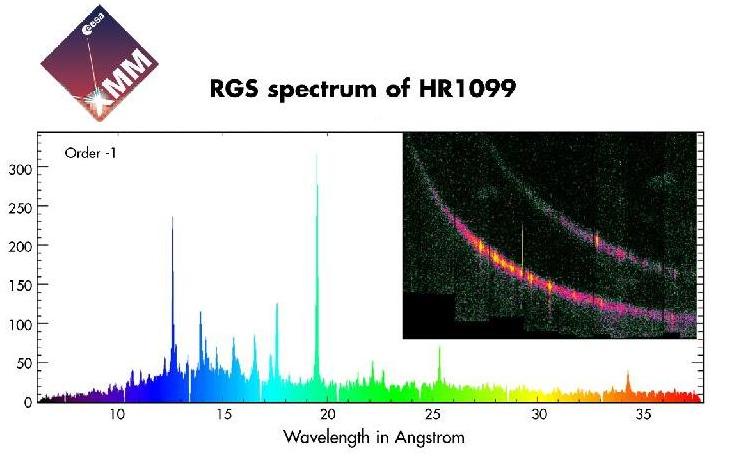
 Credit: ESA
Credit: ESA
Newton's First Rainbow
Different atomic elements absorb and emit light in specific colors or
energies. Breaking light into its component colors to determine the
location of these energies allows astronomers to determine the presence of
atomic emission or absorption lines, which allows them to determine an
object's composition, temperature, density, and speed. The Reflection
Grating Spectrometer (RGS) on the XMM
telescope (recently christened the XMM-Newton Telescope) allows astronomers
to spread X-ray radiation into its component wavelengths and probe the
makeup of the X-ray emitting object (star, nebula, galaxy or black hole).
The picture above shows the RGS X-ray spectrum of the star HR 1099. The
banana-shaped band in the inset shows the detected X-rays plotted as a
function of the position on the Newton X-ray detector, while the graph
shows the X-rays plotted according to their wavelength. X-ray emission
lines show up as peaks in the graph. These emission lines correspond to
various elements present in the source: the presence of different types of
iron, oxygen carbon and neon can all be seen.
Last Week *
HEA Dictionary * Archive
* Search HEAPOW
* Education
Each week the HEASARC
brings you new, exciting and beautiful images from X-ray and Gamma ray
astronomy. Check back each week and be sure to check out the HEAPOW archive!
Page Author: Dr. Michael F.
Corcoran
Last modified April 4, 2002


